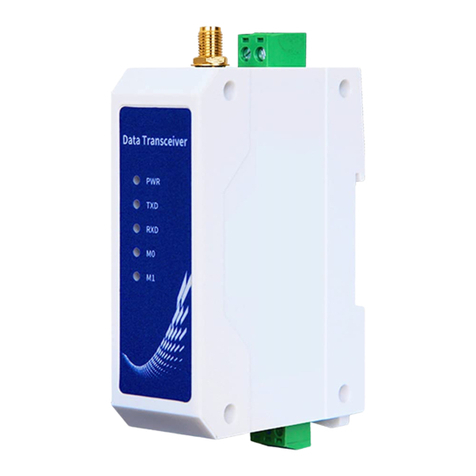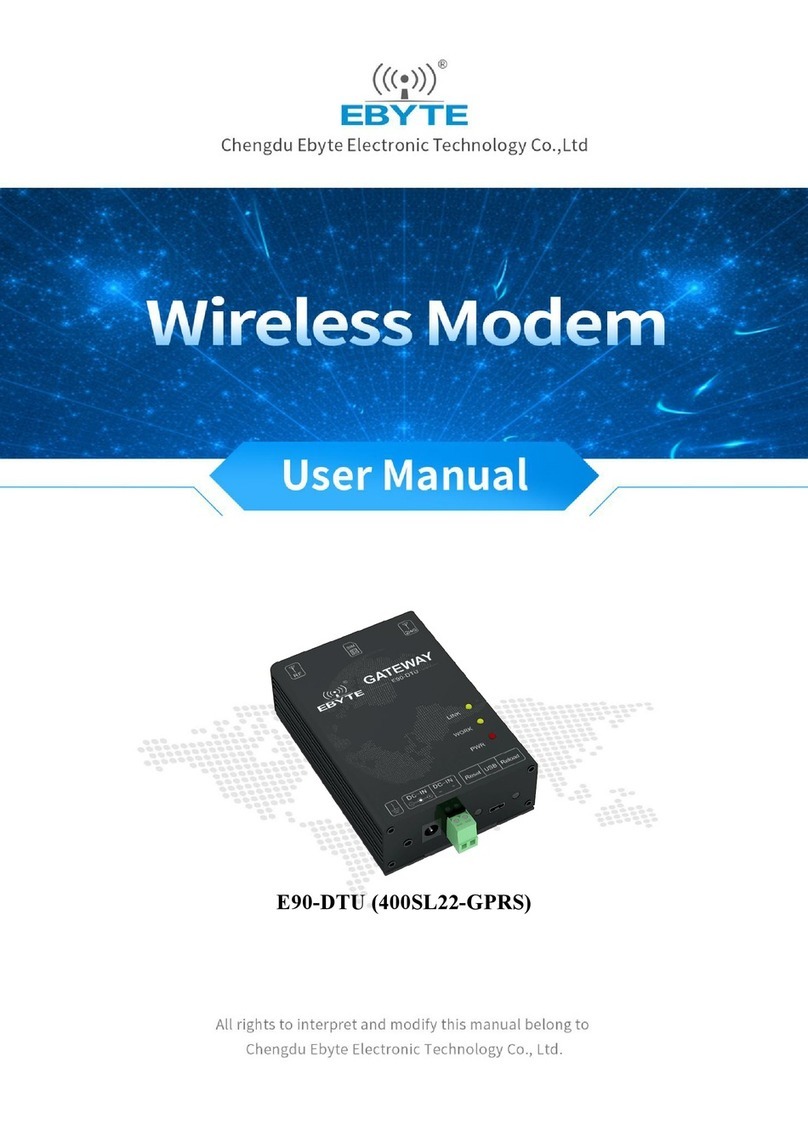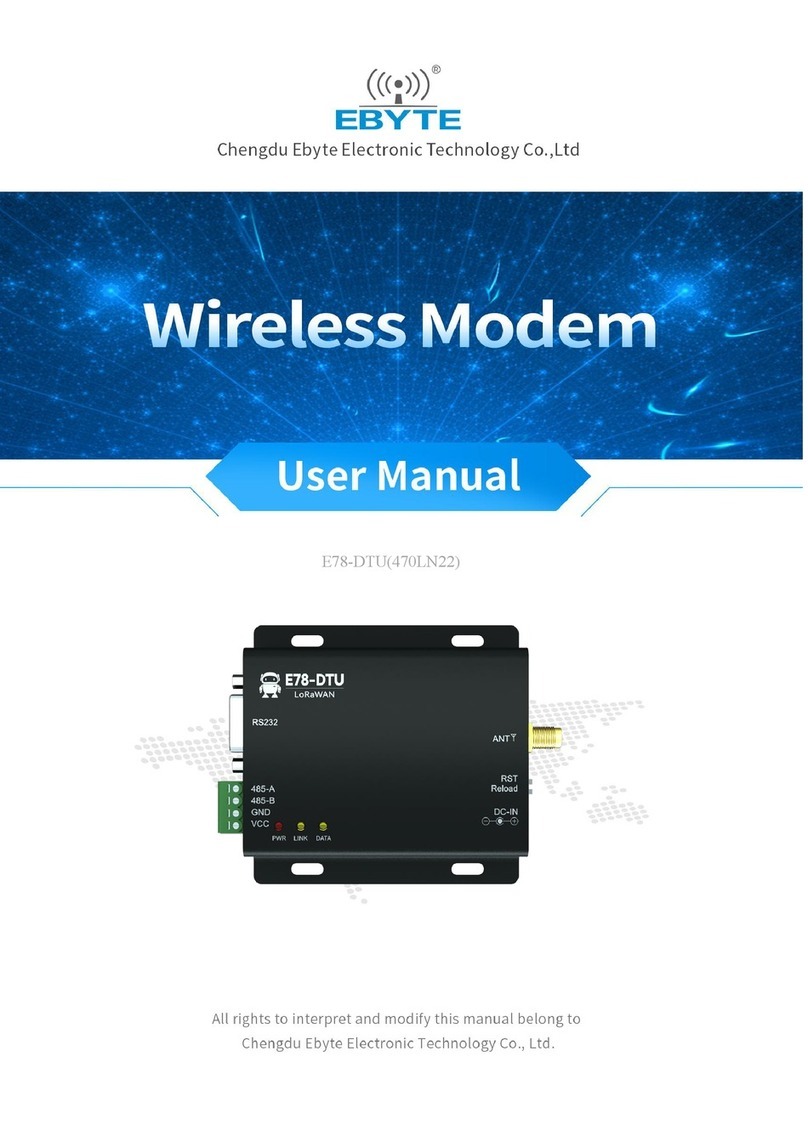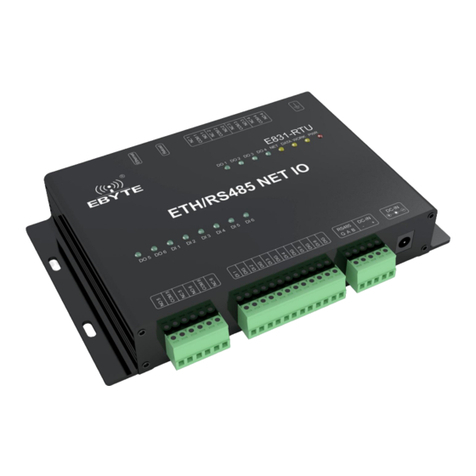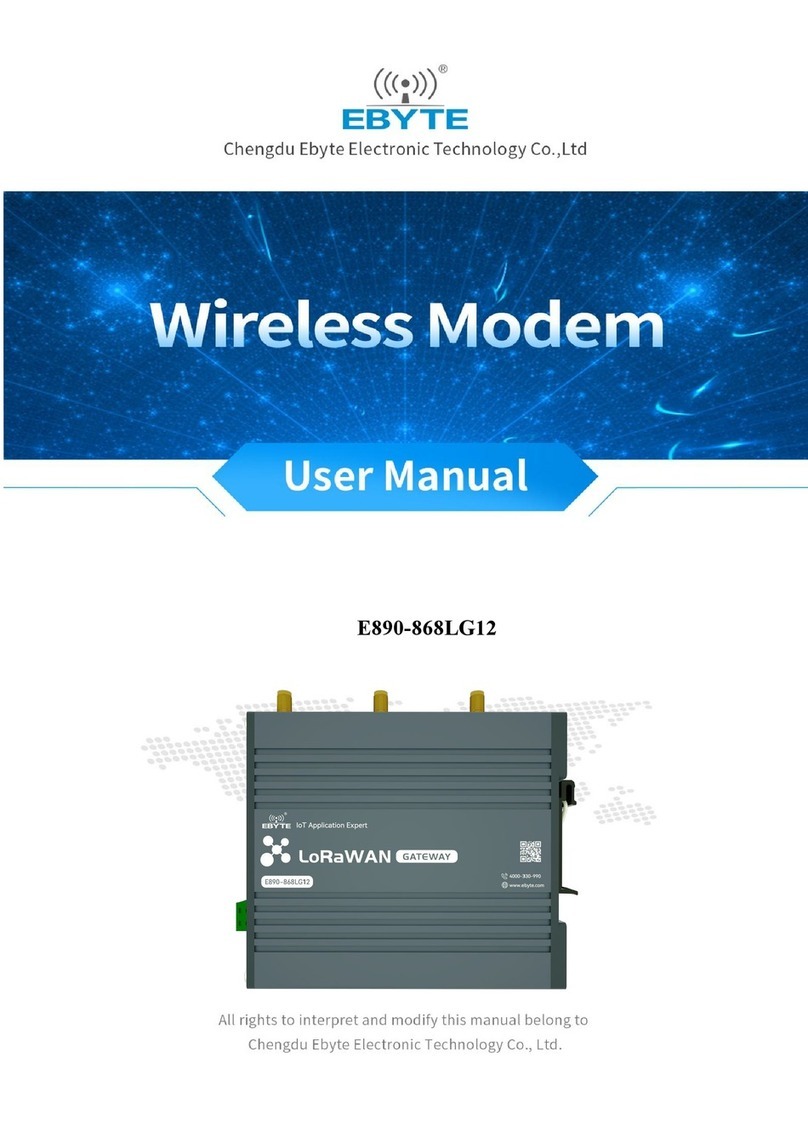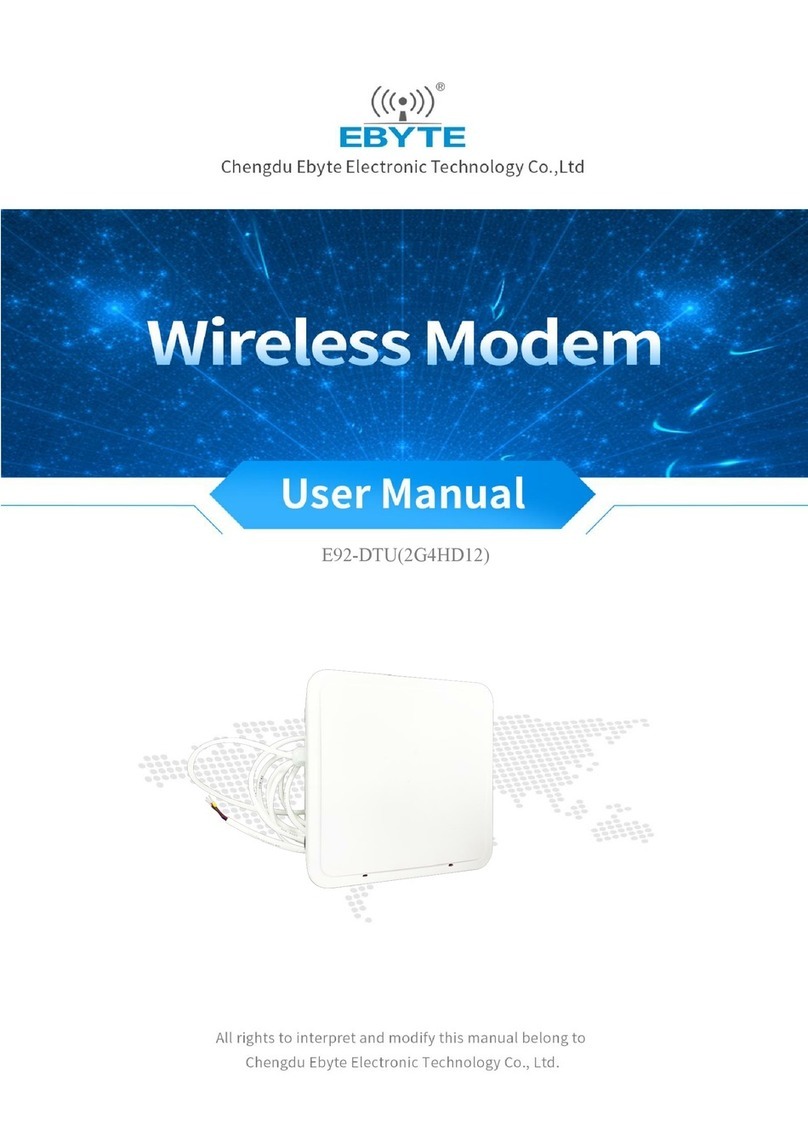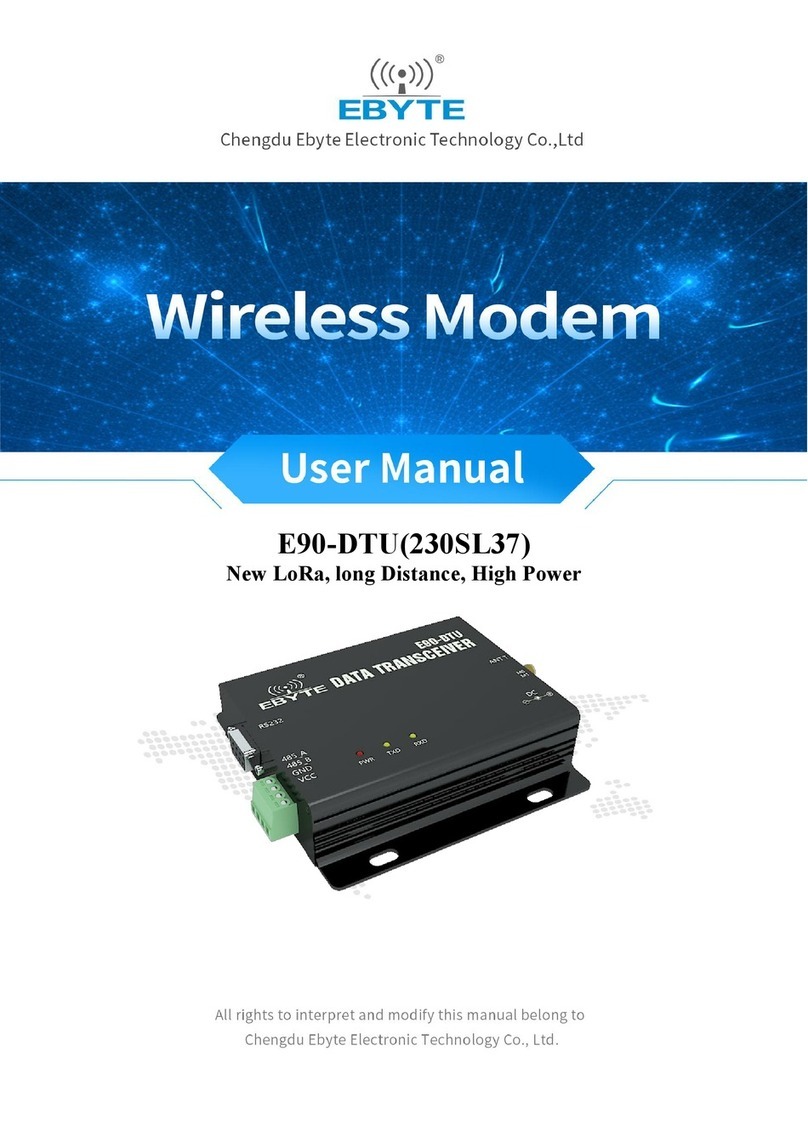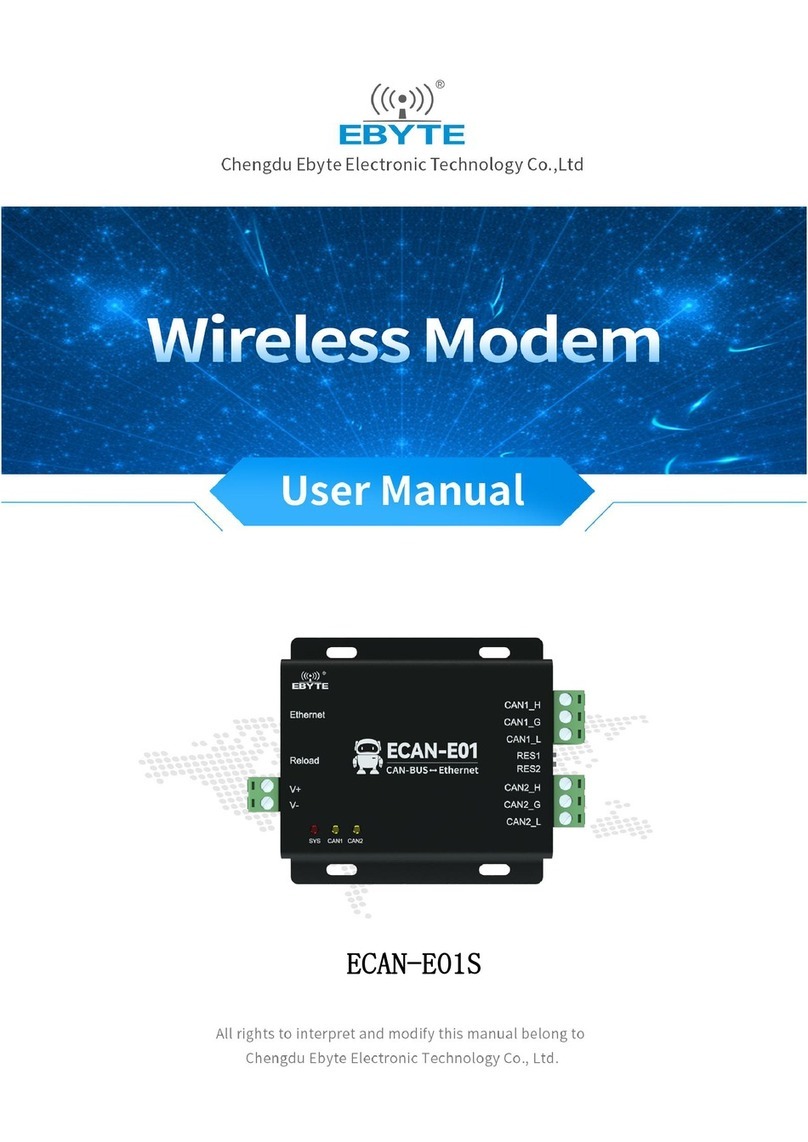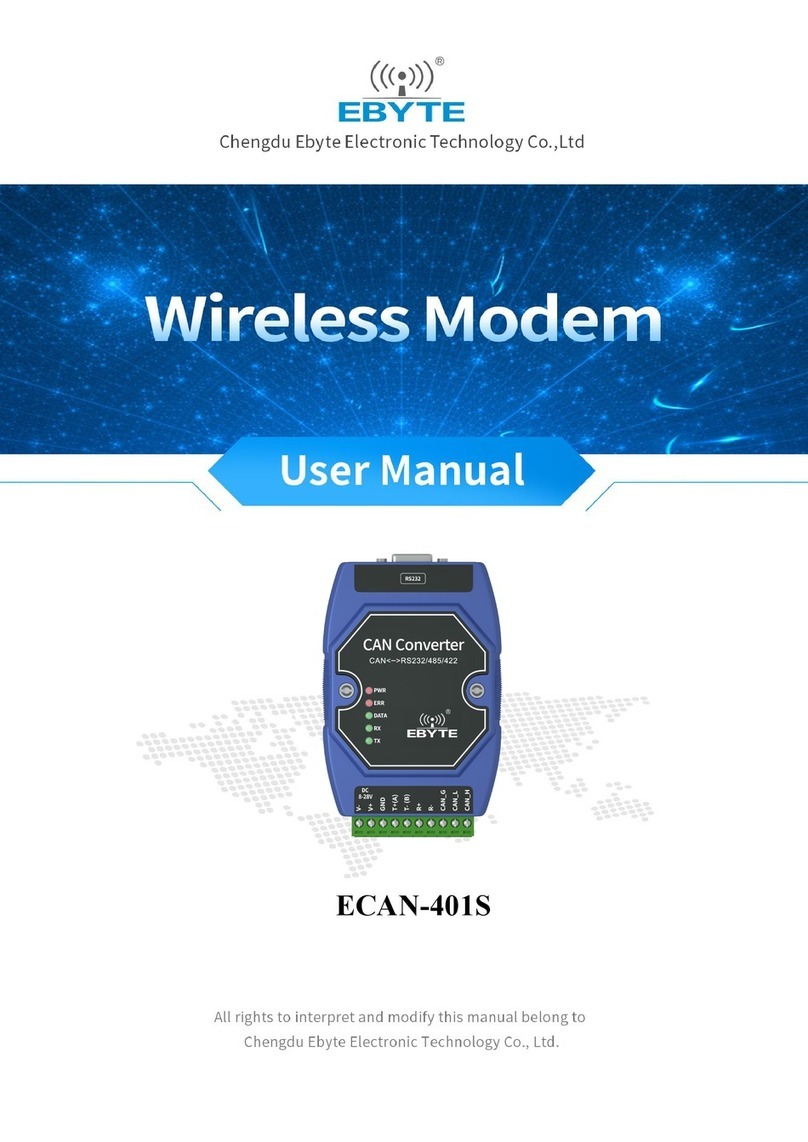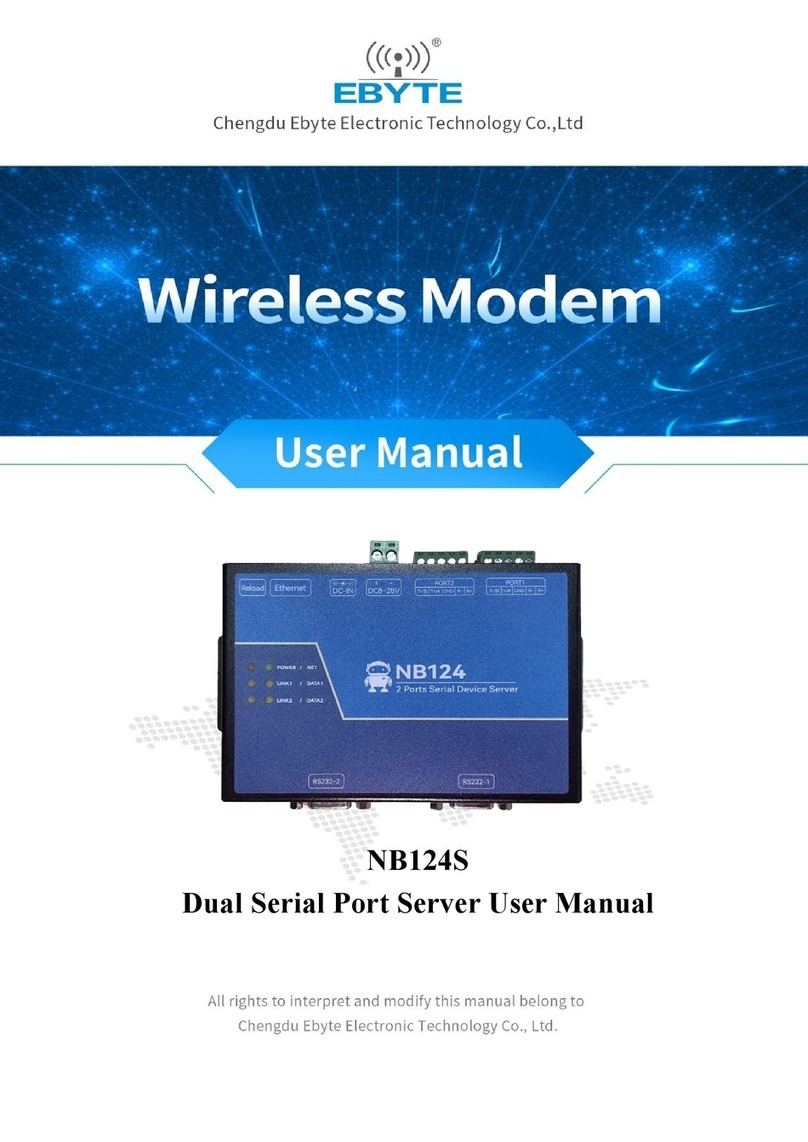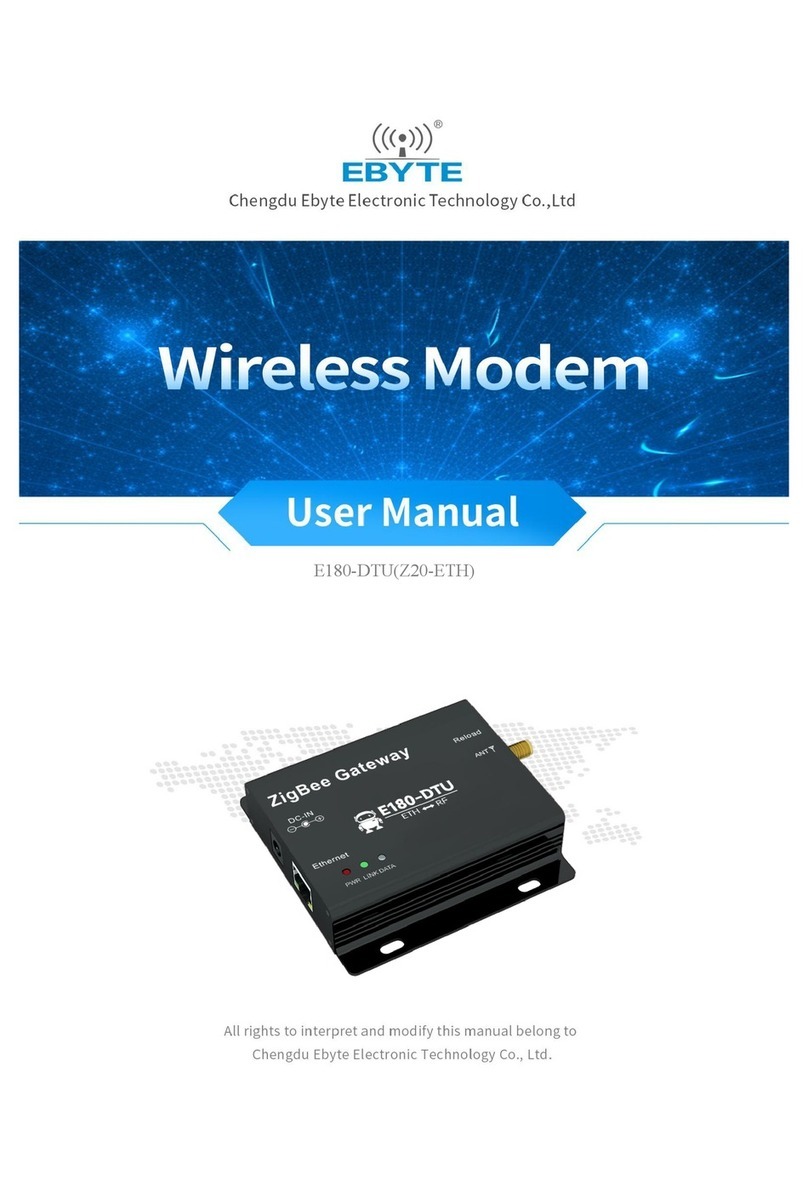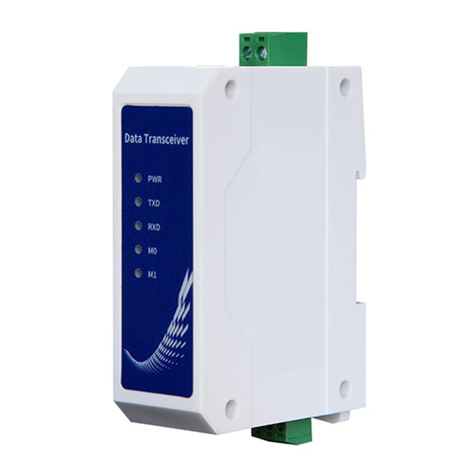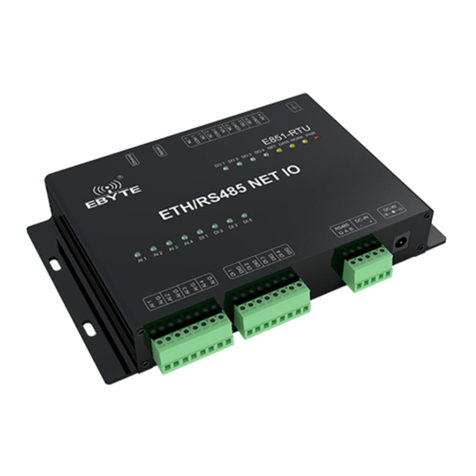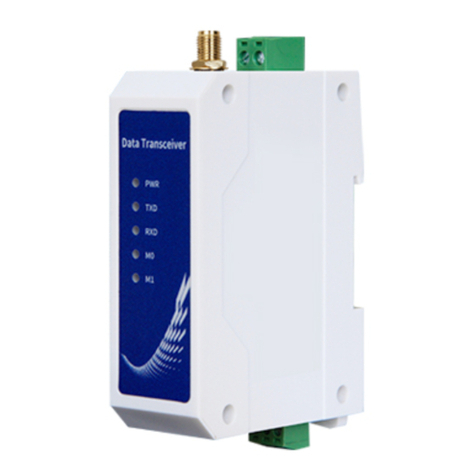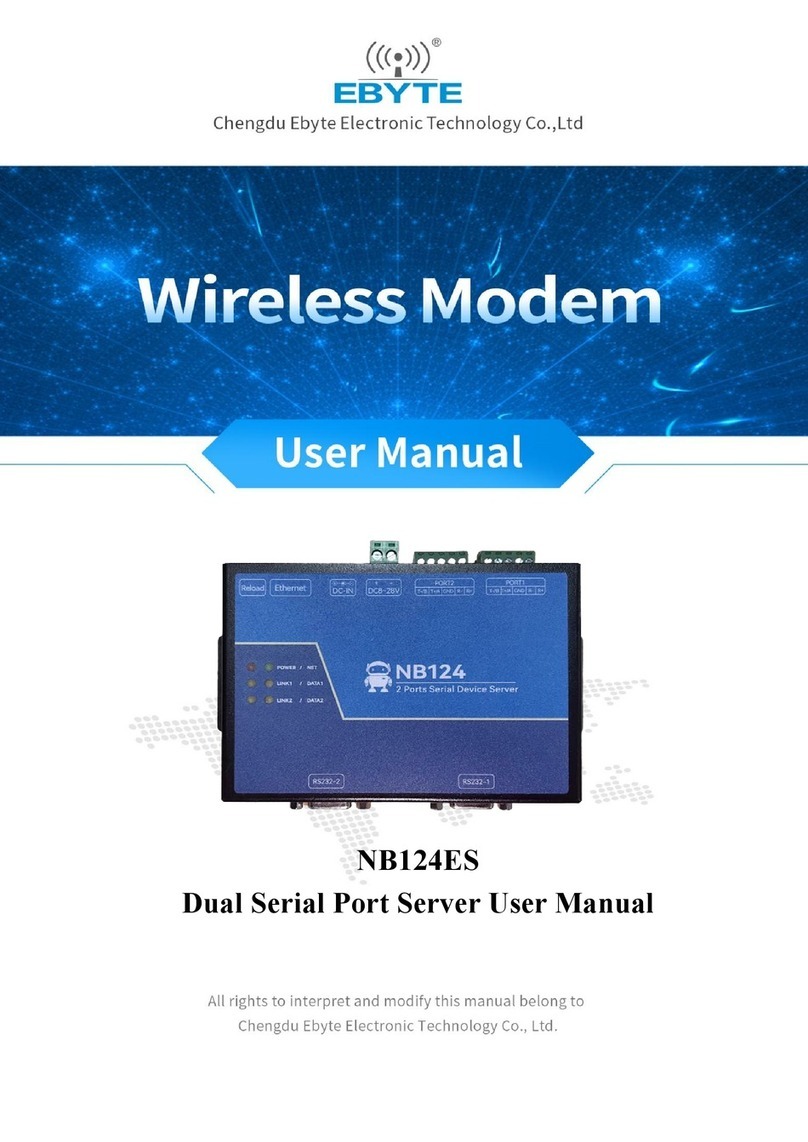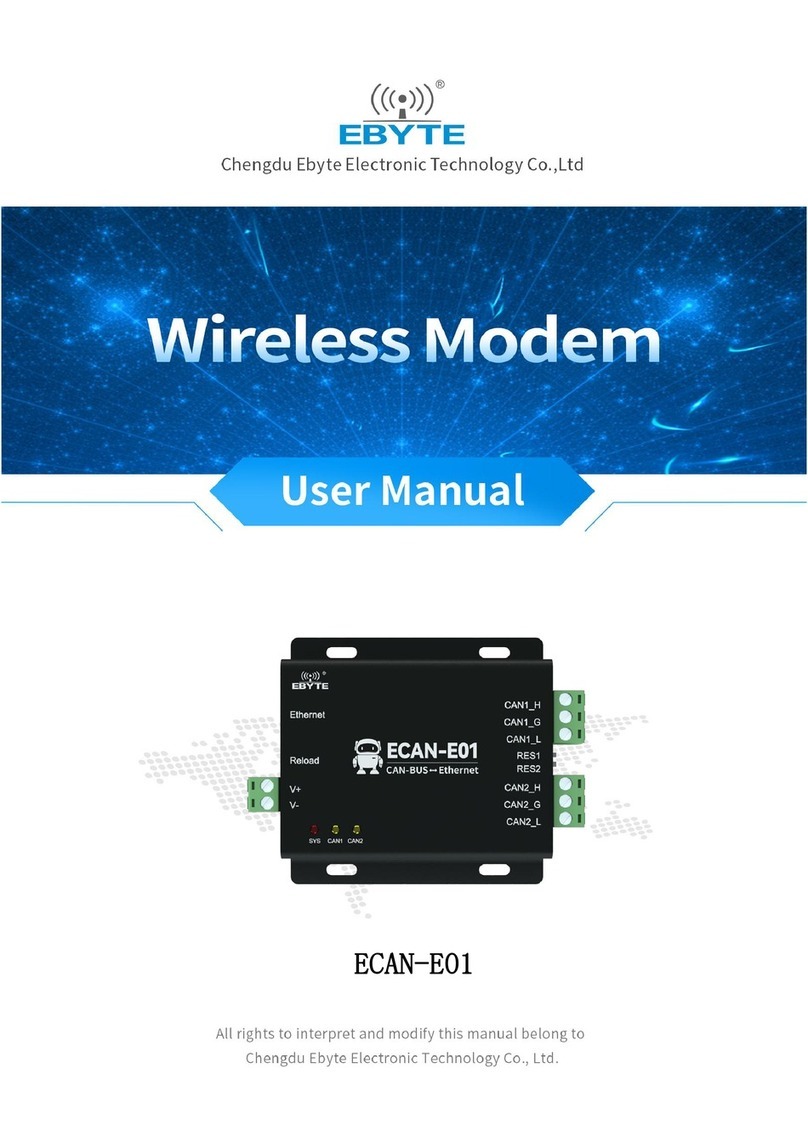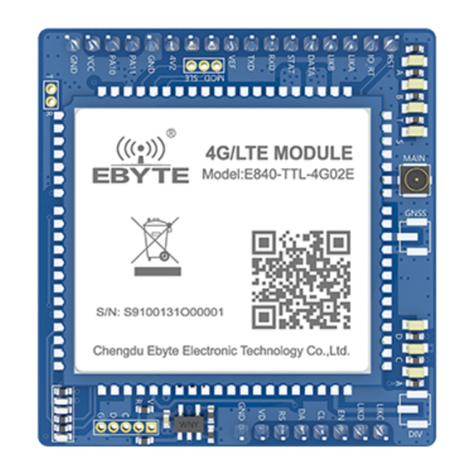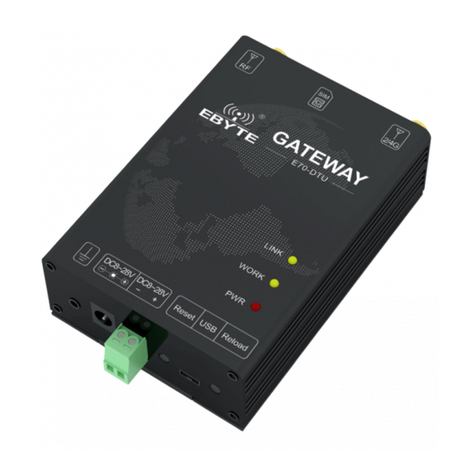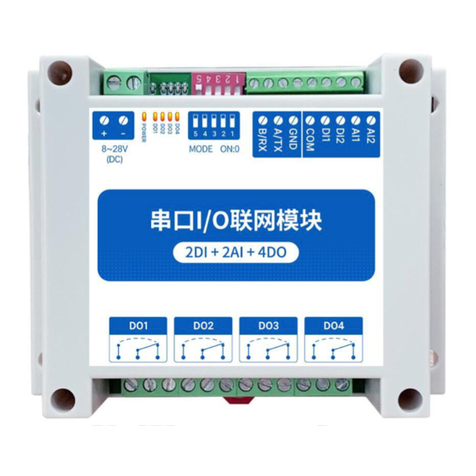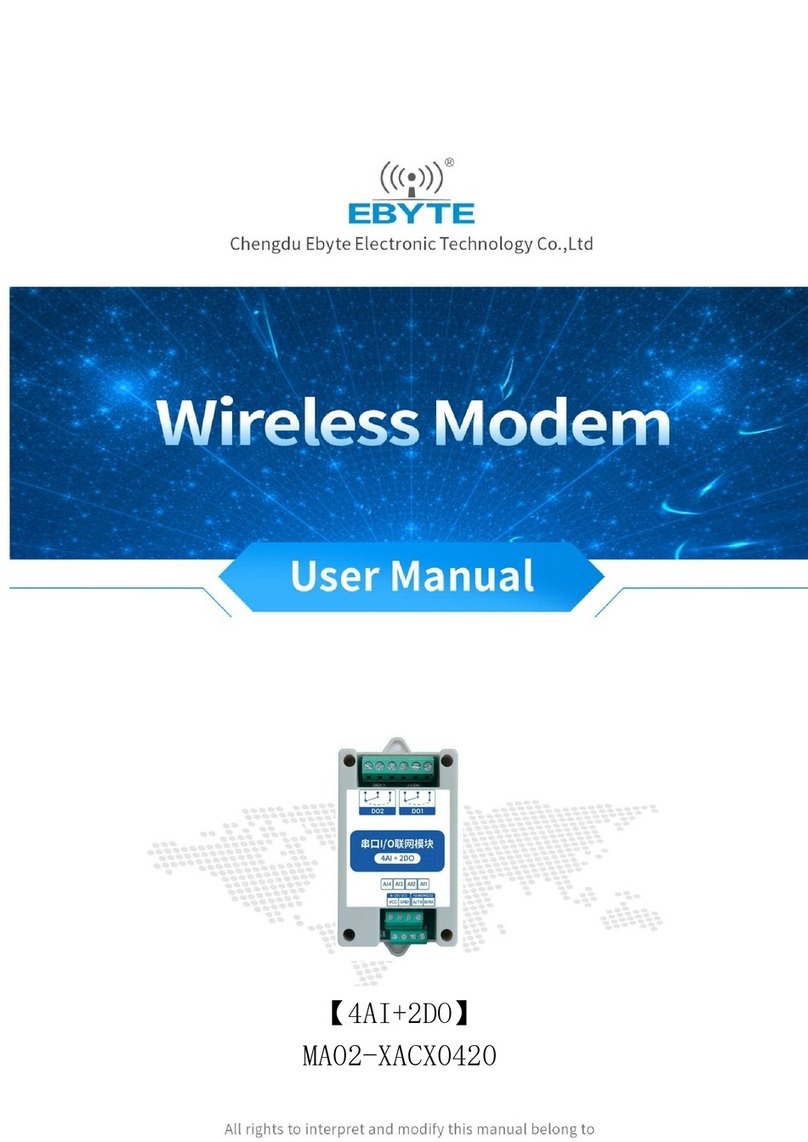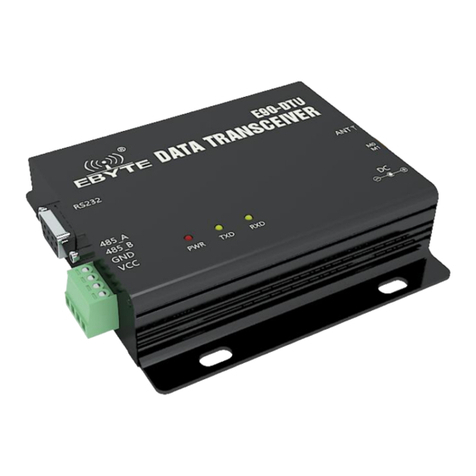
Chengdu Ebyte Electronic Technology Co., Ltd E180-DTU(ZG120-485) Usermanual
Copyright ©2012–2019,
Chengdu Ebyte Electronic Technology Co.,Ltd 1
Contents
1 Product introduction............................................................................................................................................................ 3
1.1 Brief introduction..................................................................................................................................................... 3
1.2 Features.................................................................................................................................................................... 3
1.3 Product features........................................................................................................................................................3
2 Size and pin definition......................................................................................................................................................... 4
2.1 Pin definition............................................................................................................................................................ 5
2.2 Size........................................................................................................................................................................... 6
3 Interface definition...............................................................................................................................................................7
3.1 Power supply interface............................................................................................................................................. 7
4 Function description............................................................................................................................................................ 7
4.1 Transmission mode.................................................................................................................................................. 7
4.2 Configuration mode..................................................................................................................................................7
4.3 Mode switch............................................................................................................................................................. 7
5 Data receiving and transmitting mode.................................................................................................................................8
5.1 Data transmitting mode............................................................................................................................................ 8
5.1.1 Broadcast mode..................................................................................................................................................... 8
5.1.2 Multicast mode......................................................................................................................................................8
5.1.3 Unicast mode.........................................................................................................................................................8
5.2 The output mode of the received data...................................................................................................................... 8
5.2.1 Transparent output.................................................................................................................................................8
5.2.2 Data+short address................................................................................................................................................ 9
5.2.3 Data+long address................................................................................................................................................. 9
5.2.4 Data+RSSI.............................................................................................................................................................9
5.2.5 Data+short address+RSSI..................................................................................................................................... 9
5.2.6 Data+long address+RSSI...................................................................................................................................... 9
6 Application function and command configuration.............................................................................................................. 9
6.1 Function....................................................................................................................................................................9
6.1.1 LINK description...................................................................................................................................................9
6.1.2 RUN description..................................................................................................................................................10
6.1.3 UART_BAUD_RESET description....................................................................................................................10
6.2 Wireless remote configuration function.................................................................................................................10
6.3 Function parameter description..............................................................................................................................10
6.4 HEX command.......................................................................................................................................................12
6.4.1 Command rules................................................................................................................................................... 12
6.4.2 Read command.................................................................................................................................................... 13
6.4.3 Configuration command......................................................................................................................................14
6.4.4 Network operation command.............................................................................................................................. 15
6.5 HEX parameter description....................................................................................................................................16
6.5.1 System TX mode.................................................................................................................................................16
6.5.2 Data output.......................................................................................................................................................... 16
6.5.3 Device type..........................................................................................................................................................16
6.5.4 Network state.......................................................................................................................................................16
